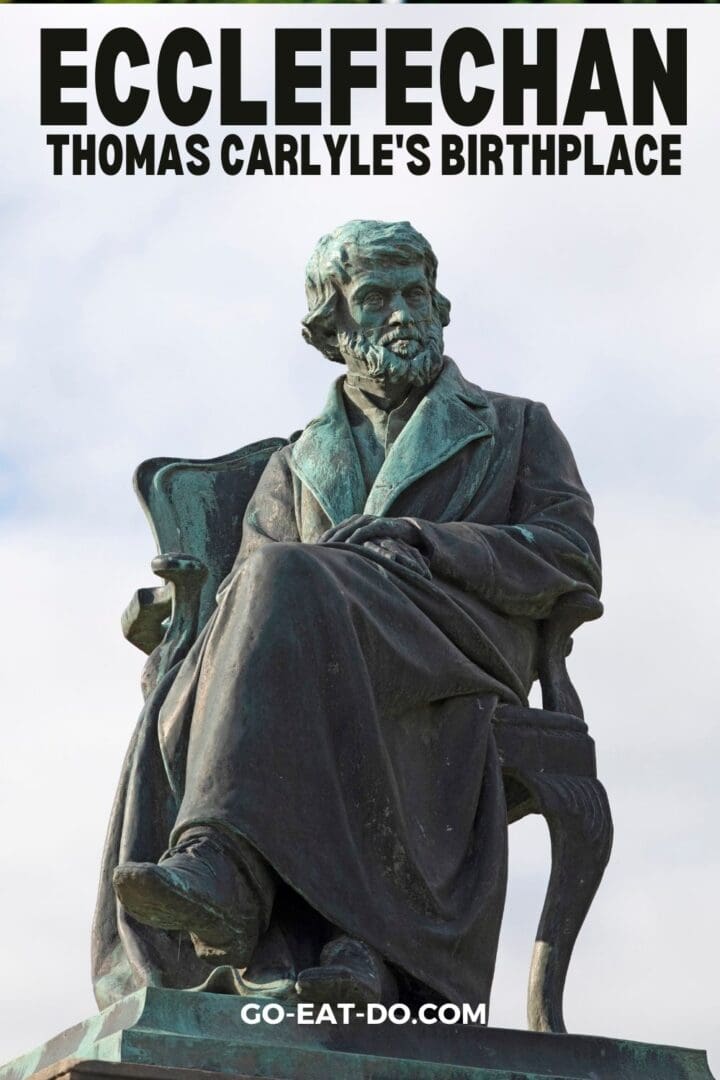Stuart Forster visits Ecclefechan and Thomas Carlyle’s Birthplace in southern Scotland because of the sound of the village’s name.
Some of the links and banners below are affiliate links, meaning, at no additional cost to you, I will earn a commission if you click through and make a purchase.
The sound of Ecclefechan’s name reminded me of fallen branches crunching and snapping underfoot during a woodland walk.
I read it aloud from a traffic sign at the side of the A74(M) motorway pointing towards the village in southern Scotland. Ready to take a break from driving, I took the spontaneous decision to turn left at the next junction and make a detour into the unknown.

Visiting Ecclefechan for its name
Never before have I been tempted to visit a place simply because of its name. There was something poetic, something beautiful in the way Ecclefechan crackled off my tongue. I wanted to see the village because of that, simply to put the place to the name.
Having started the day in the Scottish Highlands I’d had no cause to read up on the attractions of Ecclefechan, eight miles (13 kilometres) from the Scotland-England border. My week-long vacation had come to an unwanted end and I was heading home.
As I turned off the motorway, I began to wonder why we take so few impromptu detours while travelling. Why is it that so many of us feel compelled to reach our destination in as short a time as possible? Particularly when an impromptu pause can be key to exploring potentially interesting locations along the way.
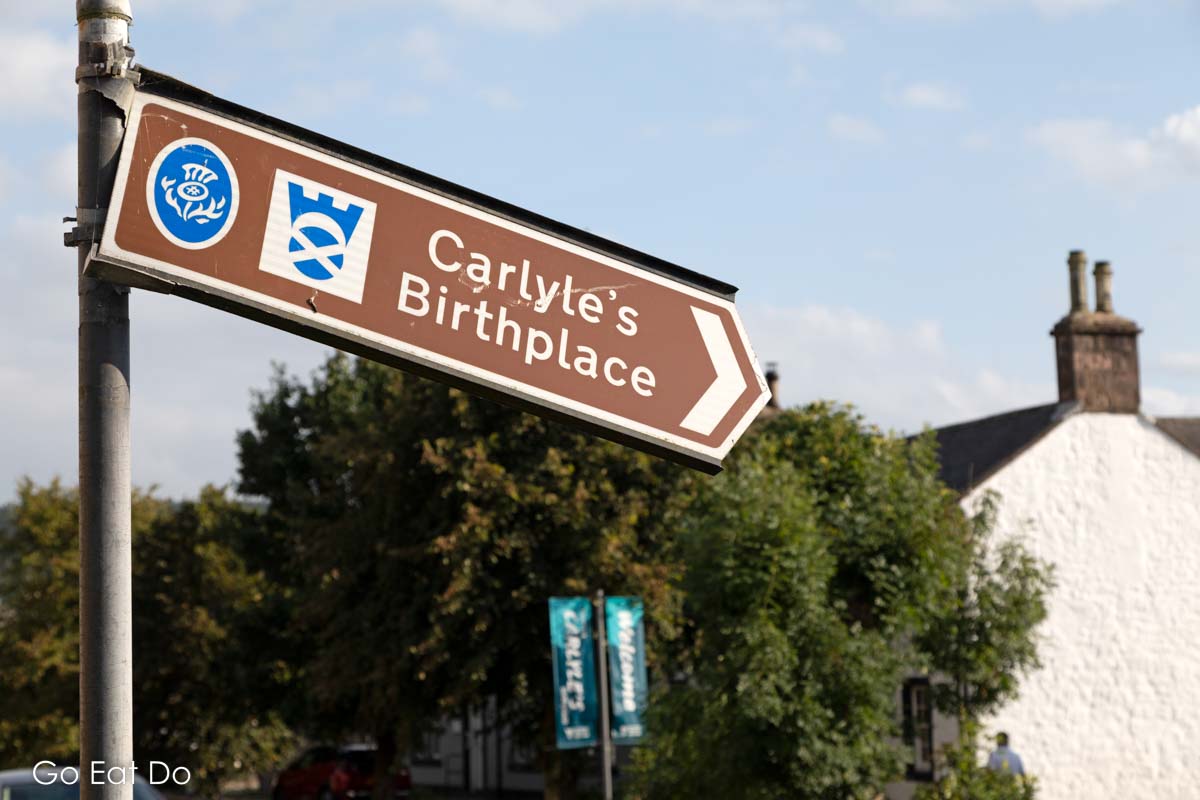
Thomas Carlyle’s Birthplace
Signs in and around Ecclefechan make it clear that the village’s principal claim to fame is in being the birthplace of the polymath Thomas Carlyle. A time-greened bronze statue depicts him sitting in a long coat. It peers over the village.

A beck babbles by the front of the white-walled cottage in which Carlyle entered the world on 4 December 1795. Three gentlemen stood chatting outside of the building as I approached, shortly after 4.00 pm on a Saturday afternoon.
“We’re already closed,” said one of the men apologetically. “But I can open up again if you’d like to look around,” he added generously.
I took him up on that kind offer and entered a room dominated by a cast iron fireplace and rugs partially covering the floor’s grey flagstones.
Over the next 90 minutes Fred, a volunteer guide and local historian, shared both his knowledge and enthusiasm. I discovered that Thomas Carlyle had a gift for learning languages, was skilled at mathematics and walked the 73 miles (117 kilometres) to Edinburgh in order to study at the Scottish capital’s university.
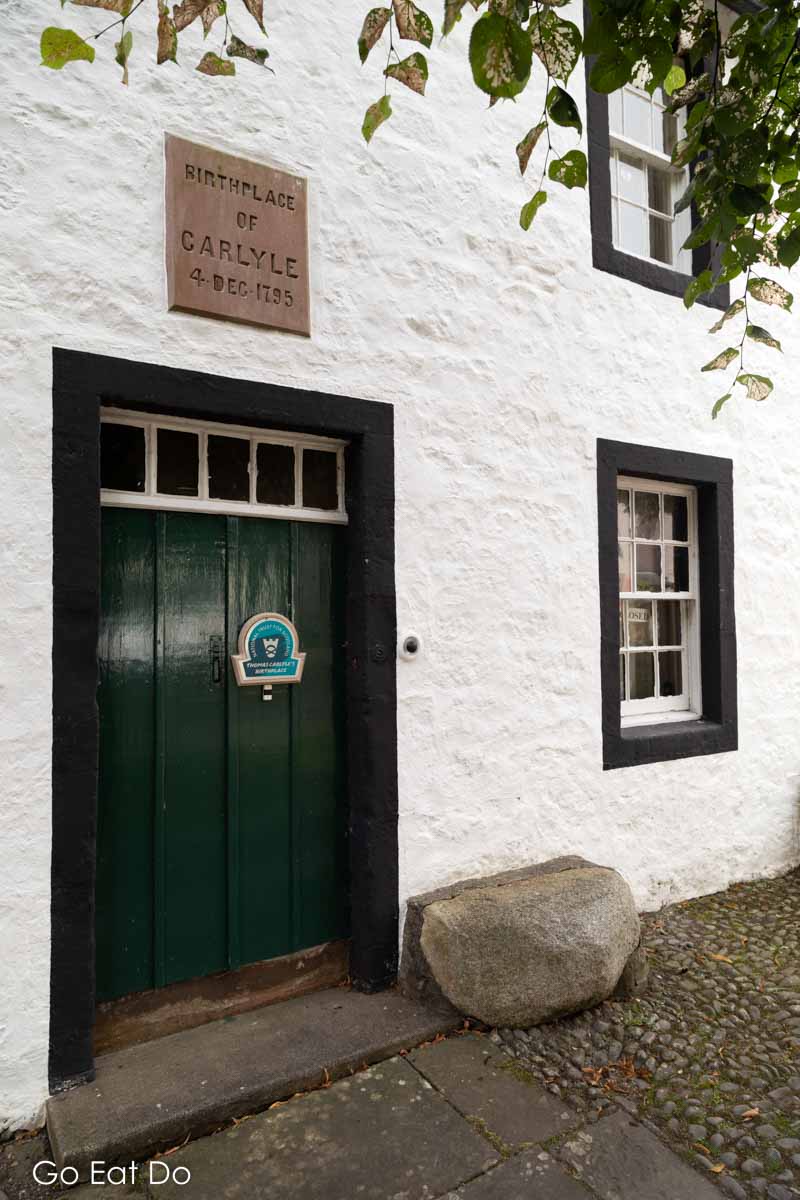
Who was Thomas Carlyle?
By the middle of the 19th century, Carlyle had become one of Britain’s most influential intellectuals. Lord Tennyson, James Joyce and Oscar Wilde counted among the literary figures who referenced Carlyle and his works.
The American poet and journalist Walt Whitman likened Carlyle’s significance to the creative and artistic life of Victorian Britain to the importance of artillery to an army.
“Charles Dickens wrote a book, The Tale of Two Cities, that was based on Thomas Carlyle’s The French Revolution: A History. He wrote it with Thomas Carlyle’s blessing,” said Fred. Charles Darwin and many other luminaries of the Victorian era visited Carlyle on the Scotsman’s 80th birthday, signing their names on a sheet that is framed and displayed on the upper level of the house in Ecclefechan.
Glancing around downstairs, I observed framed pictures hanging on walls in the cottage’s simply furnished front room. They included monochrome photographic prints of a stern but elegant bearded man. “All the clothes he wore were made with material which came from Ecclefechan. It was also made by an Ecclefechan clothier and draper…He was a fashion guru, you might say. Everyone else took to wearing the tweeds and fancy hats he was wearing,” explained Fred.
Despite his celebrity, Carlyle retained close ties with his home village. Fred explained that Carlyle returned to Ecclefechan on holiday for up to a month each year.

The grave of Napoleon’s doctor
Carlyle could have been buried in Westminster Abbey but preferred to be interred next to his parents in Ecclefechan’s kirkyard. Dr Archibald Arnott, the doctor to Napoleon Bonaparte on St Elba during the deposed emperor’s final illness, is also buried there.
Returning to my car two-and-a-half hours after parking, I paused at an information board on Ecclefechan’s High Street. It explained that weaving gingham was a major source of employment in the village when Carlyle was an adult but the industry waned when the American Civil War resulted in the supply of raw cotton being cut.
Though small, Ecclefechan has stories making it worthy of a visit as well as a cracker of a name. Perhaps spontaneous stops should be something we make more frequently while travelling?

7 things to do in Ecclefechan
Ecclefechan is a great place to pause, relax and break a road trip. While visiting the village you can:
- Visit Thomas Carlyle’s Birthplace.
- See the statue of Thomas Carlyle. It’s a replica of the sculpture by Joseph Edgar Boehm on the Chelsea Embankment in London.
- View gravestones of members of the Carlyle family and Dr Archibald Arnott in the kirkyard of Hoddom Parish Church. The great-grandfather of Robert Peel, a former Prime Minister and the founder of London’s Metropolitan Police Service, is also reputedly buried in the kirkyard.
- Stroll along the High Street and read information boards introducing the history of the village.
- Sit down and enjoy the sound of Ecclefechan Burn babbling through the village.
- Enjoy refreshments in the Ecclefechan Hotel.
- Hoddom Castle is two miles from the centre of the village. The 16th century castle has a caravan park on its grounds, making it ideal as a place to stay.
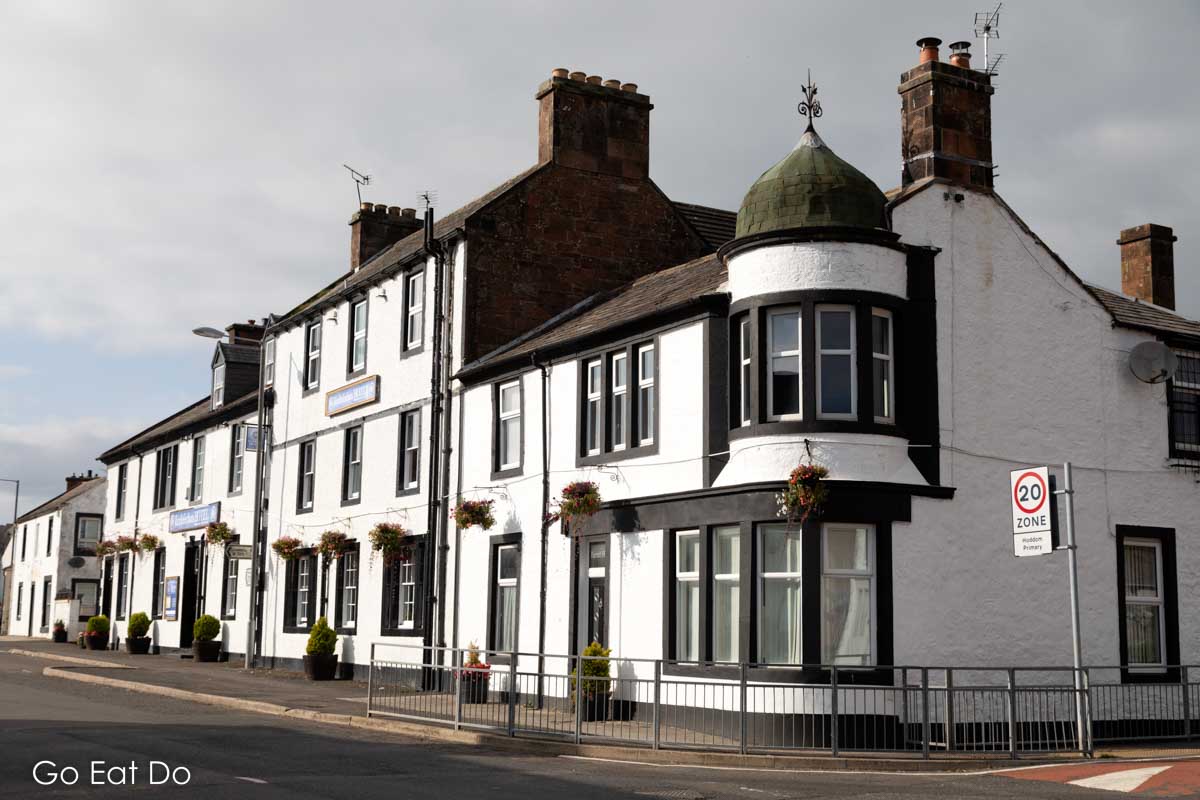
Travel to Ecclefechan
Ecclefechan is approximately 6.5 miles southeast of Lockerbie along the A74(M). The drive takes about 10 minutes.
The village is a little under 11 miles northwest of Gretna along the A74(M) and B7076. It takes about 15 minutes to drive between the two.
There’s no railway station in Ecclefechan. Nearby Lockerbie, Annan and Gretna are served by rail.
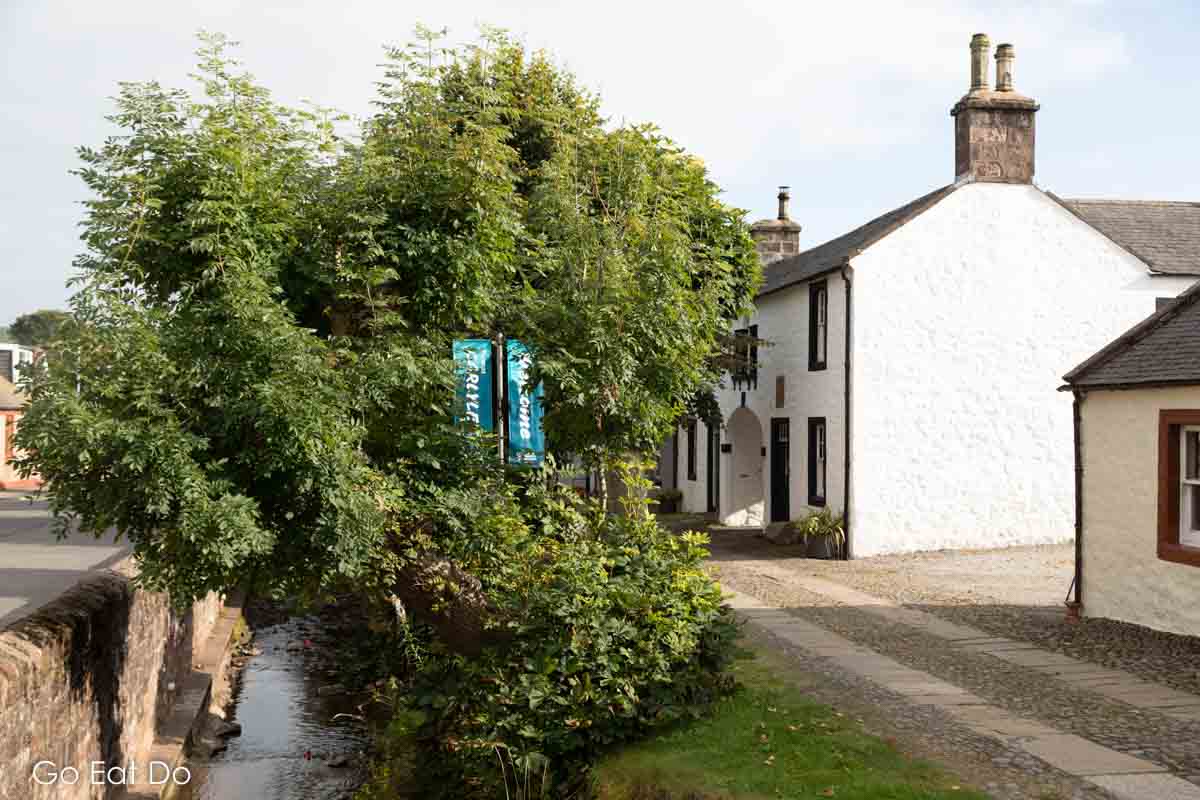
Map of Ecclefechan
Zoom in to this map of Ecclefechan to see details within the village:
Hotels in Ecclechan
Constructed during the 1730s, the 16-room Ecclefechan Hotel offers accommodation in the village centre. It is a building that Thomas Carlyle would have seen during his lifetime.
Search for accommodation in and around Ecclefechan on the Booking.com website:
Located just under 20 miles (32 kilometres) away, on the other side of the border, The Pentonbridge Inn has nine boutique rooms and a restaurant distinguished by a Michelin plate.
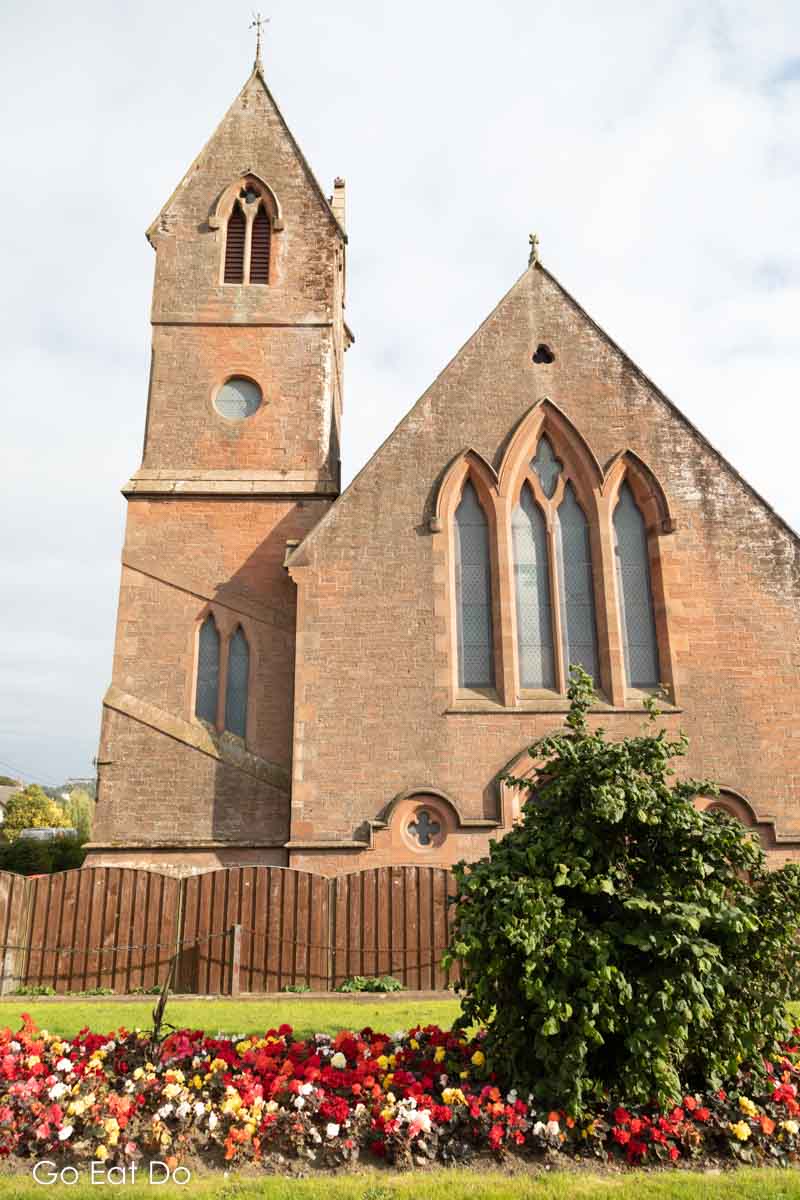
Ecclefechan tart
Named after the Scottish village, Ecclefechan tarts are made with ingredients including raisins, brown sugar, butter, eggs and plain flour.
Looking for a particularly tasty version of the Scottish tart? Chef Neil Forbes’ recipe for Ecclefechan tarts is available from The Scotsman’s website.

Books worth buying
Planning a visit to Ecclefechan and the surrounding region? You can buy the following books from Amazon by clicking on the links or cover photos:
Old Ecclefechan, Eaglesfield, Kirtlebridge and Kirkpatrick Fleming by Raymond Hood:

Bradt Guides’ Slow Travel series guidebook to Dumfries and Galloway:

Lonely Planet’s Scotland guidebook:

The French Revolution by Thomas Carlyle:

Sartor Resartus by Thomas Carlyle:

Further information
The National Trust for Scotland manages Thomas Carlyle’s Birthplace.
See the Visit Scotland website for information about things to do in Dumfries and Galloway.
Thank you for visiting Go Eat Do and reading this post about visiting Ecclefechan and Thomas Carlyle’s Birthplace. If you are planning a trip to Scotland you may also enjoy reading this post about reasons to visit Edinburgh Castle.
Stuart Forster, the author of this post, is an award-winning travel writer based in North East England. His work has been published by national newspapers including The Sun, The Mail on Sunday and The Daily Telegraph.
If you enjoyed this post why not sign up for the free Go Eat Do newsletter? It’s a hassle-free way of getting links to posts on a monthly basis.
‘Like’ the Go Eat Do Facebook page to see more photos and content.
